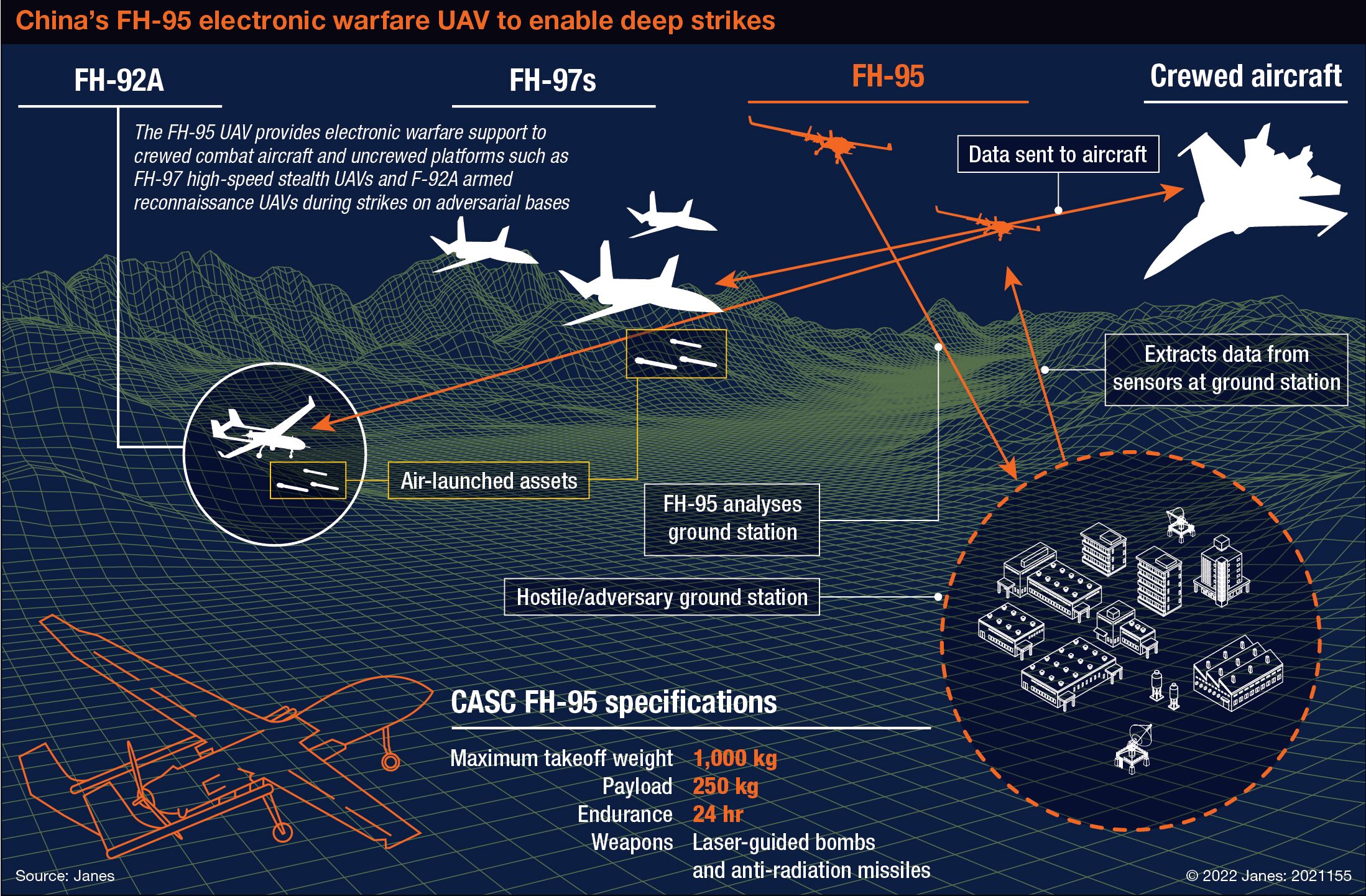
China's new electronic warfare FH-95 drone is being developed to analyse and collect sensor data from adversarial ground stations to help Chinese crewed and uncrewed combat aircraft conduct deep strikes. The UAV designs depicted in this graphic are based on official mock-ups or images of the aircraft released by CASC.
China’s FH-95 electronic warfare drone passed a “milestone” test last month, according to state media.The drone can fly for over 24 hours, performing missions including strike, reconnaissance, and electronic warfare in “highly contested battlefield environments.” FH-95 drone would provide “another dimension” to drone deployment, its electromagnetic warfare capabilities.
It is essential to mention the FH-97 drone and the FH-95 drone because, according to Global Times, these two drones could complement each other in live combat situations, such as the FH-95 drone could provide electromagnetic interference ahead of the suppression of enemy air defense (SEAD) strikes by the FH-97 drone .
Or it could be another way around, meaning the FH-97 drone can be used as decoys to bait the enemy air defenses into revealing their positions, following which the FH-95 drone can go in and take out the air defense radars using its anti-radiation missiles, thereby making it safer for manned fighter jets to operate.
Also, reports suggest that the FH-95 drone could also be employed as an early warning platform, considering the advances in radar warning receiver (RWR) components which are becoming smaller and can be outfitted on lighter platforms.
Manufacturer: China Aerospace Science and Technology Corporation
Maximum take-off weight: 1000kg
Payload weight: 250kg
Maximum service ceiling: 42,000 ft
Endurance: 24h
